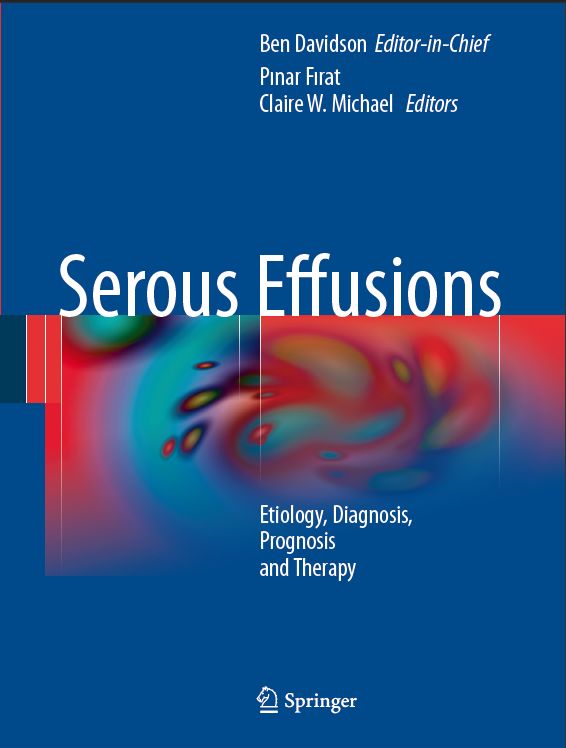Books on cytology
A textbook on one of the most common and difficult topics in CytoPathology
The serosal cavities are affected by a large number of benign and malignant processes, and serous effusions constitute one of the most commonly seen specimen types in cytopathology. Unlike other areas within cytopathology, which have practically become extinct, such as fine needle aspiration of the prostate, or that are being challenged by other diagnostic approaches, such as breast and cervical cytology in the context of core biopsies and HPV testing, respectively, effusions are here to stay.
The main reason for this is the obvious fact that cytology is the only method by which one may retrieve cells from fluid, often in the absence of solid lesions or when obtaining a biopsy from the latter is more difficult and costly, and entails much greater discomfort or risk for the patient. The second reason why effusions are more relevant than ever, is the growing share of cancer in global morbidity and mortality, resulting from longevity, and probably from increased exposure to cancer-causing agents.
Whereas many of the morphologic principles related to effusion cytology have not been changed in the last decades, the ancillary methods that aid us in this diagnosis setting are different. Not insignificantly, so are the clinical expectations. Medicine in the 21st century is experiencing rapid movement towards personalized Medicine and the use of targeted therapy as supplement to the more established modalities of surgery, chemotherapy and radiation. As many of these therapeutic approaches are and will be used in the setting of metastatic and/or recurrent disease, cytopathologists have a unique opportunity to be central players in this new world. Effusions are often large-volume and easy to obtain, and consist of viable cells that are dissociated or in small groups, making this material ideal for both immunohistochemistry and molecular techniques.
Several excellent chapters on serous effusion diagnosis have been published in cytopathology textbooks, and few books dealing exclusively with effusions have been published as well. The present book differs from these earlier publications in its scope and approach, being the first one to combine diagnosis and research. The first two sections of the book provide an updated overview of all entities which may be encountered in effusion diagnosis, with illustrations of the majority of these entities. An appendix dealing with the authors’ choice of antibodies for the most common differential diagnostic dilemmas concludes this part of the book.
Following the diagnostic sections is a comprehensive overview of research performed on effusions, with the exception of hematological cancer, detailing current status in lung, breast and ovarian carcinoma, in malignant mesothelioma, and in various cancers of other origin. These chapters demonstrate the vast potential of effusions as material for translational, as well as experimental research. Furthermore, many molecules analyzed as part of a scientific project are making their way into the clinic as part of new therapeutic approaches, or have already entered this arena.
While cytopathologists are the primary audience of this book, we hope that by bridging diagnostics and science this publication may prove of interest to other disciplines, including both clinicians and researchers, who are involved in the battle against cancer.
